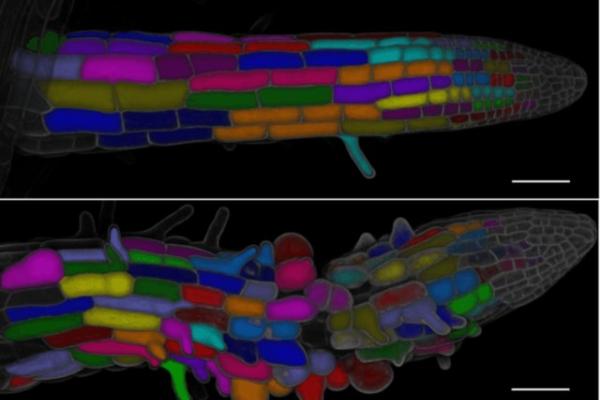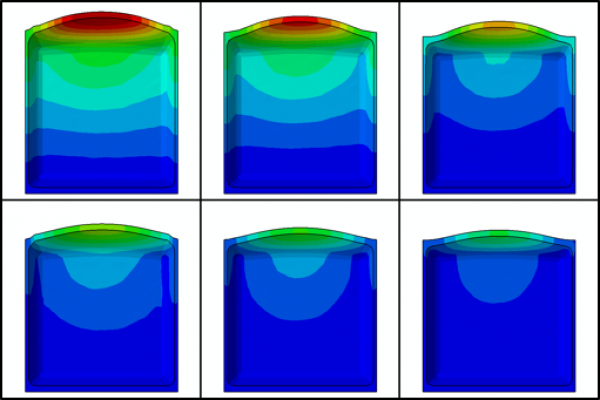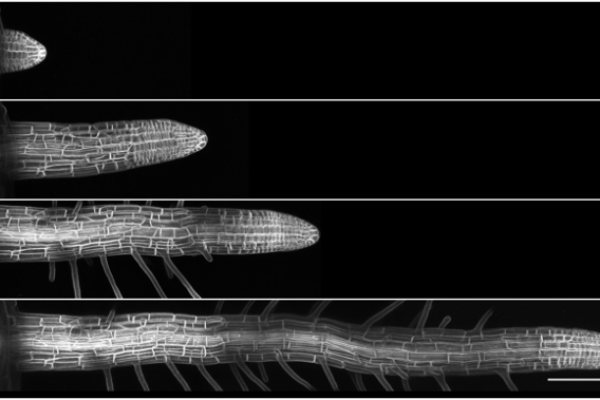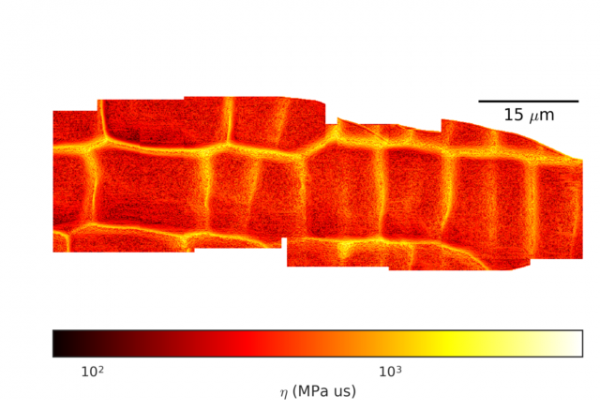Home
Computational modelling of cell wall mechanics
Long-term confocal microscopy
Dynamic Atomic Force Microscopy
The mechanics of plant growth
Alle Gestalten sind ähnlich, und keine gleichet der andern,
Und so deutet das Chor auf ein geheimes Gesetz […]1
(Johann Wolfgang von Goethe, Die Metamorphose der Pflanzen)
What is Goethe's “secret law” determining the intricate shapes produced by multicellular organisms? The underlying process, morphogenesis, is highly complex, and characterised by three remarkable features: robustness, hierarchy, and emergence. Organisms manage to produce highly similar forms across a wide range of conditions, indicating the robust nature of morphogenesis. Morphogenesis is hierarchical because it involves events on multiple organisational scales, from whole organs over individual cells and subcellular domains down to individual regulatory molecules. Furthermore, these events occur on dramatically different time scales, ranging from several days, over which organs develop, down to fractions of seconds for molecular interactions. Although individual factors contributing to morphogenetic events have been studied extensively, morphogenesis cannot be predicted solely from these individual components – it has emergent properties.
In plants, morphogenesis is dominated by the rigid cell wall surrounding each cell, and precise spatio-temporal control of cell wall mechanical properties lies at the heart of morphogenesis. These mechanical properties are time dependent, because they emerge from the capacity of the cell wall to store (elasticity) and dissipate (viscosity) mechanical energy. In other words, viscoelasticity determines biological shapes and their mechanical behaviour across temporal and spatial scales, from the molecular to the cellular to the organ level. However, one of the most challenging questions in modern biology is to understand how mechanical properties and other factors (including genetic, biochemical and spatial information) are integrated across these multiple scales during morphogenesis.
We are an interdisciplinary group of researchers based at the Departments of Engineering Science, Plant Sciences, and Physics with a shared interest in the mechanics of plant growth. We combine our expertise to measure visco-elastic properties of growing cells, investigate the underlying molecular mechanisms, and understand emerging properties at the organ scale. Using this multi-discilinary approach, we hope to further our understanding of the mechanisms governing plant morphogenesis, and on a more general level, gain new insights into biological materials.
1Like unto each the form, yet none alike, And so the choir hints a secret law […]
(translation by Douglas Miller, 1995)






